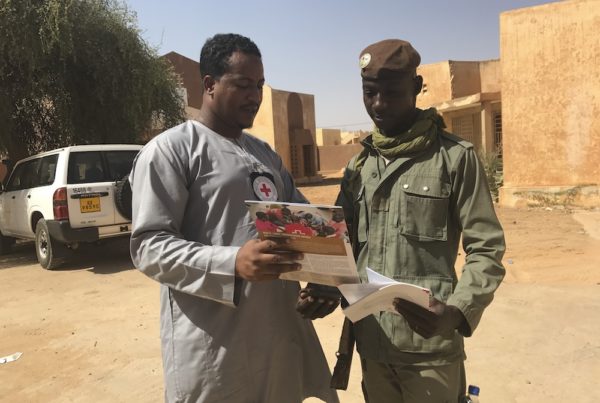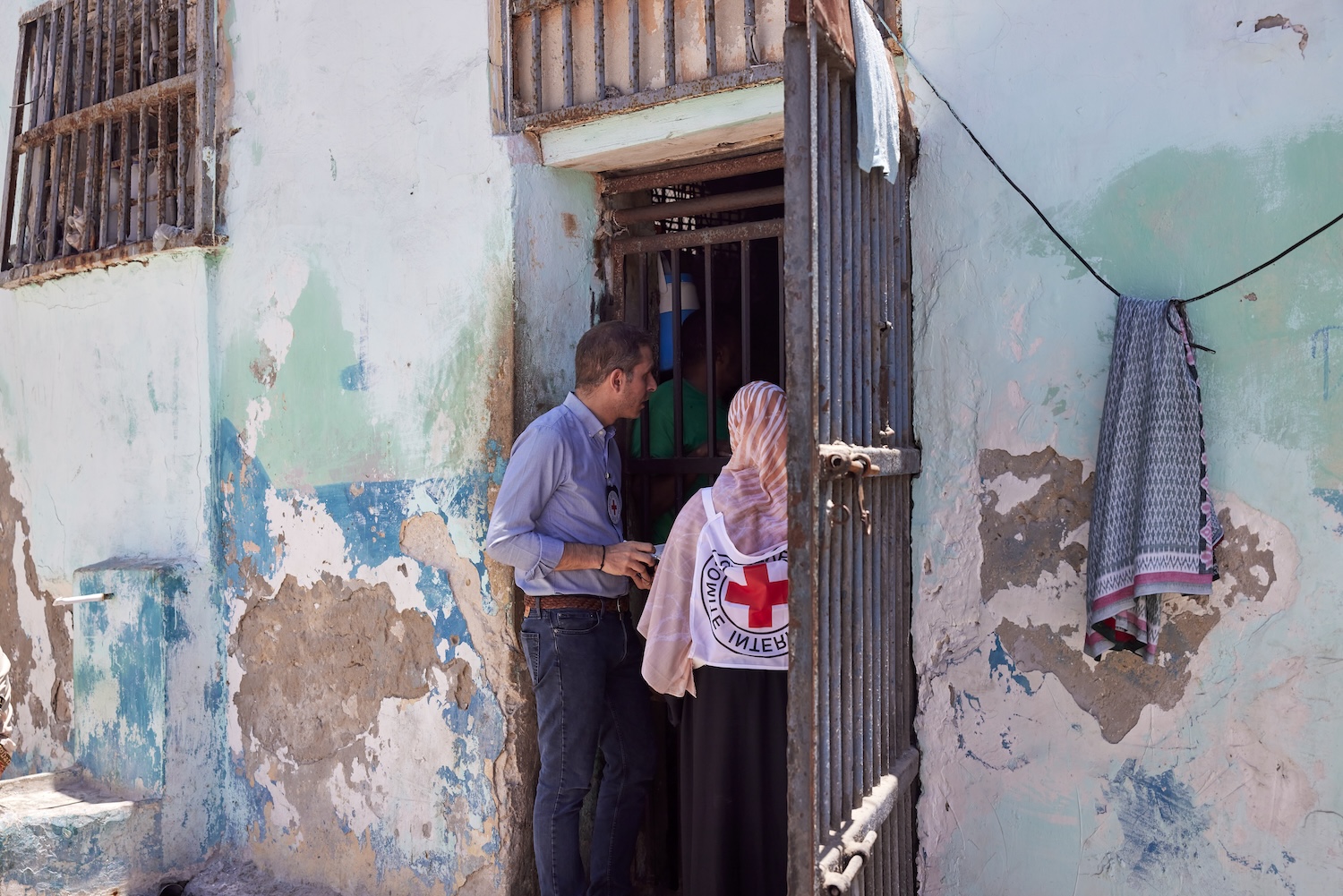
Negotiating is all about finding a compromise. To do so, you need to weigh the risks against the benefits of your actions.
In other words, evaluating how far is ‘too far’ is important when finding an agreeable solution.
To do that, you need to understand your boundaries and your counterpart’s. Then, you can find a middle ground between both.
Keep reading to find out how to establish your negotiation red lines, conduct a risk-benefit analysis based on different negotiation scenarios, and reach an acceptable agreement for all that respects humanitarian principles.
“Negotiation: The subtle art of finding a compromise that makes everyone equally unhappy.”
– Anonymous author
The art of finding mutual benefits
A successful negotiation requires finding a solution that benefits both parties.
When you manage to reach a compromise that creates value for yourself and your counterpart, you ensure a more acceptable solution and, therefore, a more sustainable humanitarian intervention.
For you, a beneficial agreement could mean a greater impact on the local population and better security.
For your counterpart, it could support their economic or political interests, such as gaining legitimacy in the eyes of their hierarchy or constituency.
To find a mutual benefit, make sure to assess your counterpart’s interests and values. Knowing what drives their actions can reveal the right points of connection and the potential for shared benefits.
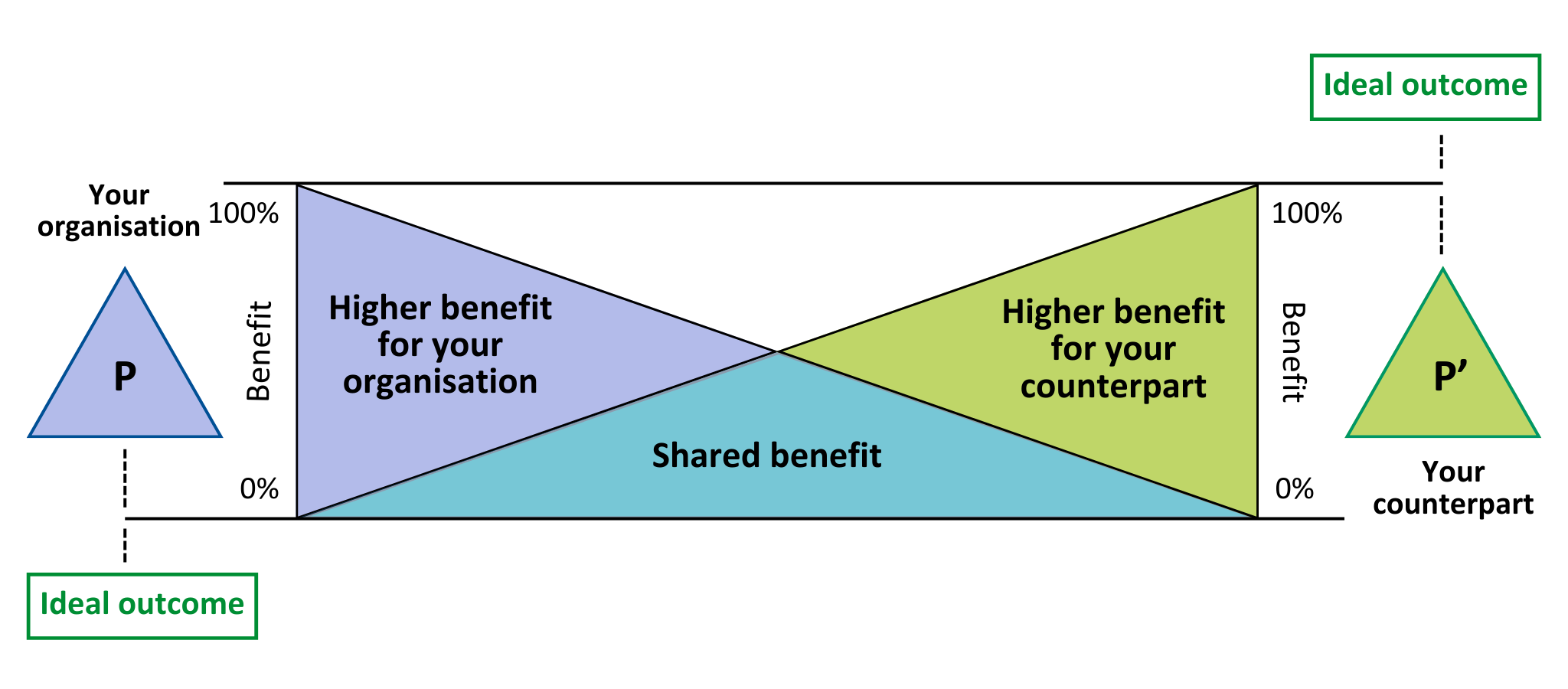
Red lines vs. bottom lines: know your boundaries
With that in mind, it’s time to understand where your boundaries lie.
According to the CCHN Field Manual, you can define two kinds of limits to your humanitarian operation:
- Red lines: These are the non-negotiable limits set by your organisation’s mandate. They are based on laws, policies, humanitarian principles and ethical considerations. Crossing a red line can have severe legal and reputational consequences.
- Bottom lines: Unlike red lines, bottom lines are tactical tools: you define them strategically based on your negotiation’s objectives. They represent the threshold where risks start outweighing the benefits. Bottom lines offer some flexibility because you can use them to manage the conversation and avoid deals that could jeopardise your organisation’s integrity or operations.
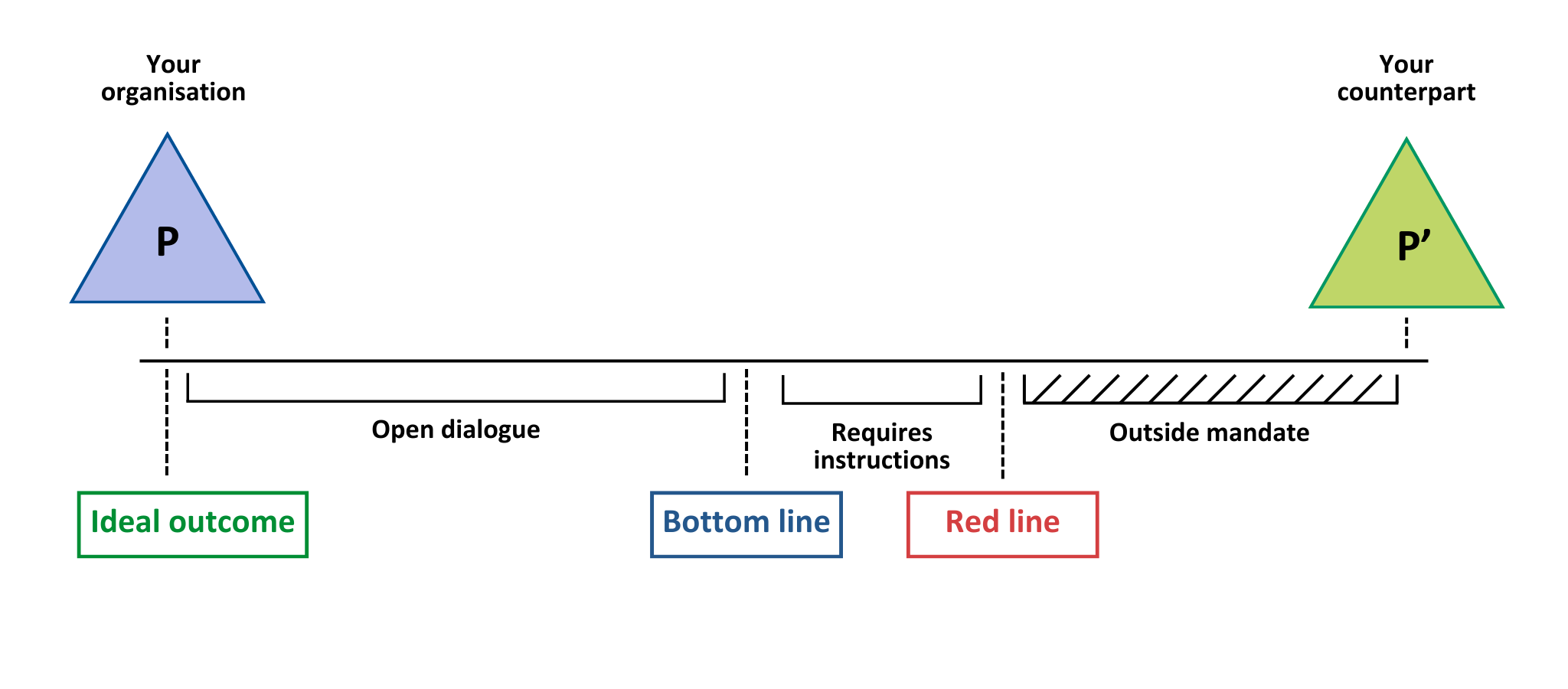
What are your red and bottom lines? How about your counterpart’s?
Now that you have the foundation, it’s time to find the right level of compromise.
How far is ‘too far’?
Start with your ideal outcome. Imagine what it would look like if your organisation achieved its goals with minimal compromise.
☝️ Keep in mind, this is a mental exercise. Your ideal outcome will always be unrealistic since it doesn’t consider your counterpart’s interests and motives and does not involve any shared benefit.
From this position, you can start picturing different levels of compromise.
For example, imagine you are negotiating access to a camp hosting internally displaced people.
- Ideal outcome: Full access to the camp with no military presence.
- First compromise: Full access to the camp with limited military presence.
- Second compromise: Full access to the camp with military monitoring.
- Third compromise: Limited access to the camp with military escort and beneficiary lists.
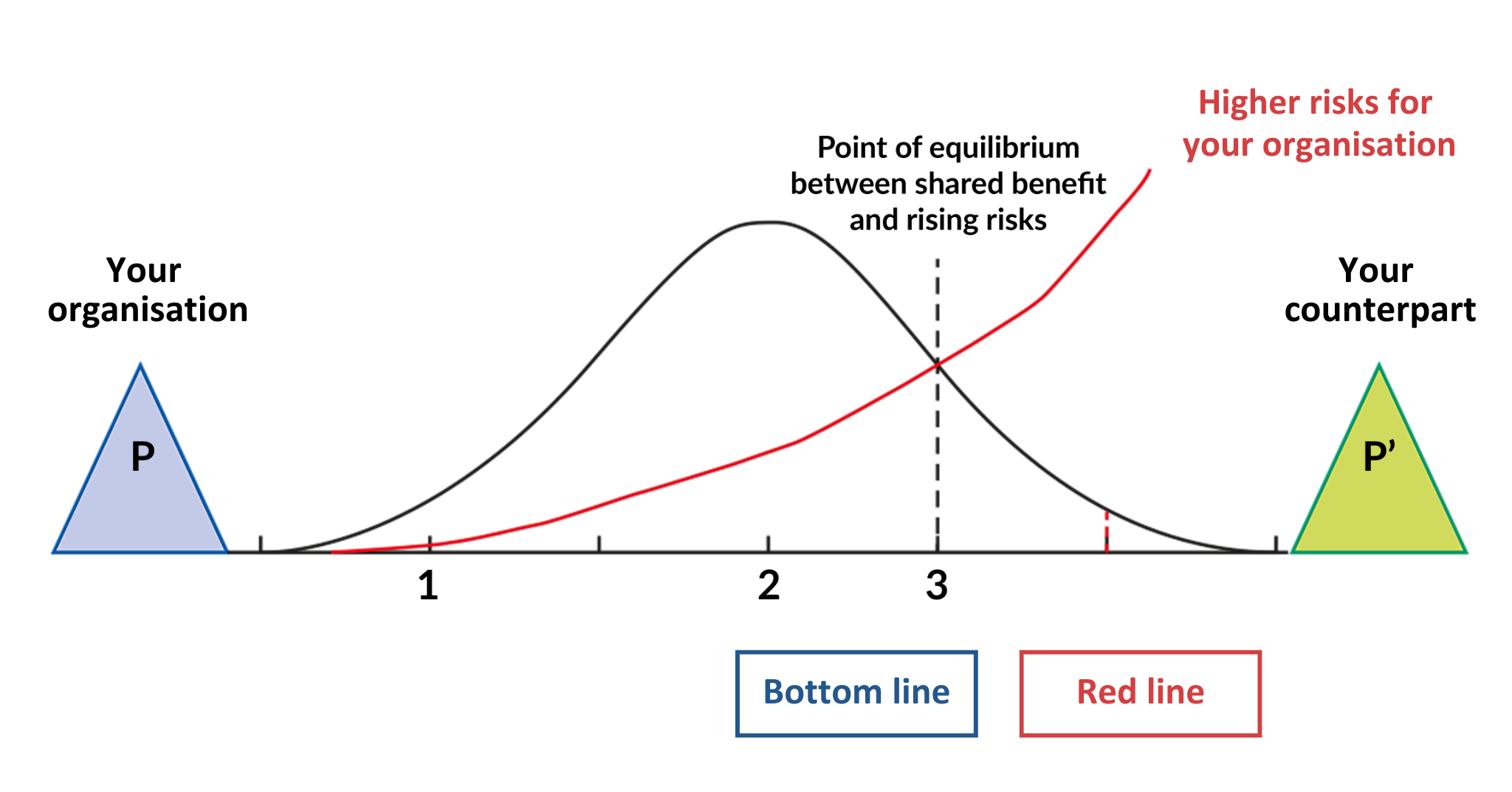
Each compromise brings the negotiation closer to a realistic agreement but also involves increasing risks and decreasing benefits for your organisation.
Assessing risks
Compromises come with costs, and it’s vital to evaluate the rising risks to your organisation. Sources of risks include:
- Humanitarian principles
- Staff security
- Protection of affected populations
- Legal norms (e.g. counter-terrorism laws)
- Operational efficiency
- Reputational risks
Whenever you feel pressured into an increasingly compromising and risky position, while the shared benefits continue to shrink, you have reached your bottom line.
This calls for a pause in the dialogue to allow some reflection with your team and reconsider what compromises you can make with your hierarchy.
Shared space for agreement
Once you have established your bottom and red lines and assessed the risks associated with each compromise, you’re ready to move to the negotiation.
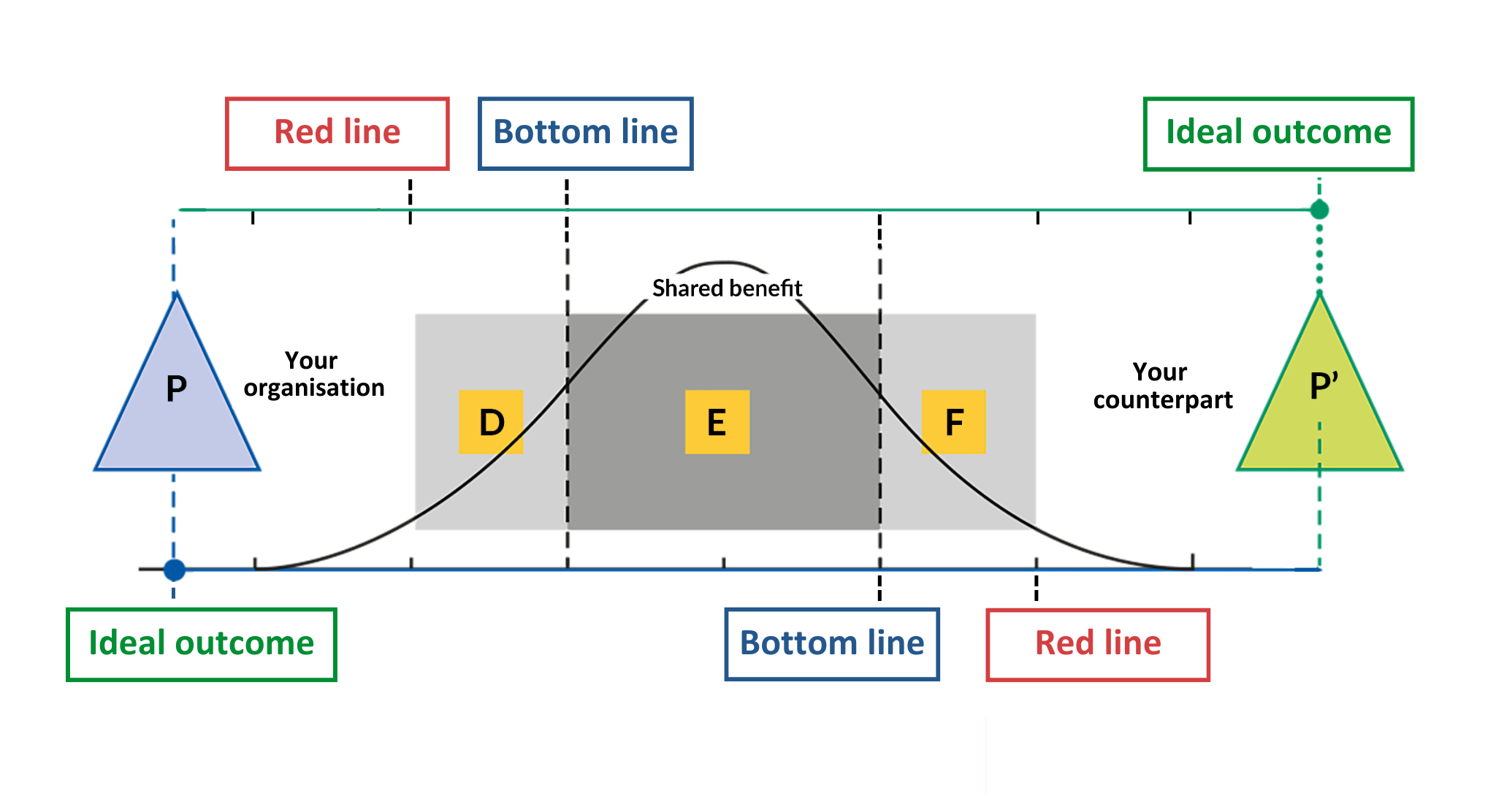
Here’s how to approach the different negotiation scenarios:
- Scenario D: Favours your organisation but requires your counterpart to refer to their hierarchy. Carries higher risks for your counterpart, who may accept the unfavourable compromise but lose trust in your organisation and become less open to dialogue in the longer term. Your counterpart can’t go beyond area D because it violates their red lines.
- Scenario E: Mutually beneficial agreements within both bottom lines. This is where the negotiation can actually take place.
- Scenario F: Favors mostly your counterpart, needing your hierarchy’s approval. Carries higher risks for you. You know that any compromise beyond area F is outside of your mandate and therefore beyond your red line.
The most beneficial solution is usually negotiated in scenario E, within both parties’ bottom lines and without overstretching too close to either red line.
Remember…
To design effective negotiation scenarios:
- Identify ideal outcomes: Lay down the best possible outcomes for both sides.
- Set red lines: Establish non-negotiable limits based on policies.
- Determine bottom lines: Identify the threshold where risks outweigh benefits.
- Engage the team: Discuss and refine the negotiation strategy with your team.
By balancing red lines, bottom lines, and shared benefits, you can navigate complex situations, ensuring that agreements not only meet your organisation’s goals but also contribute to lasting, positive impacts.
Good luck!


